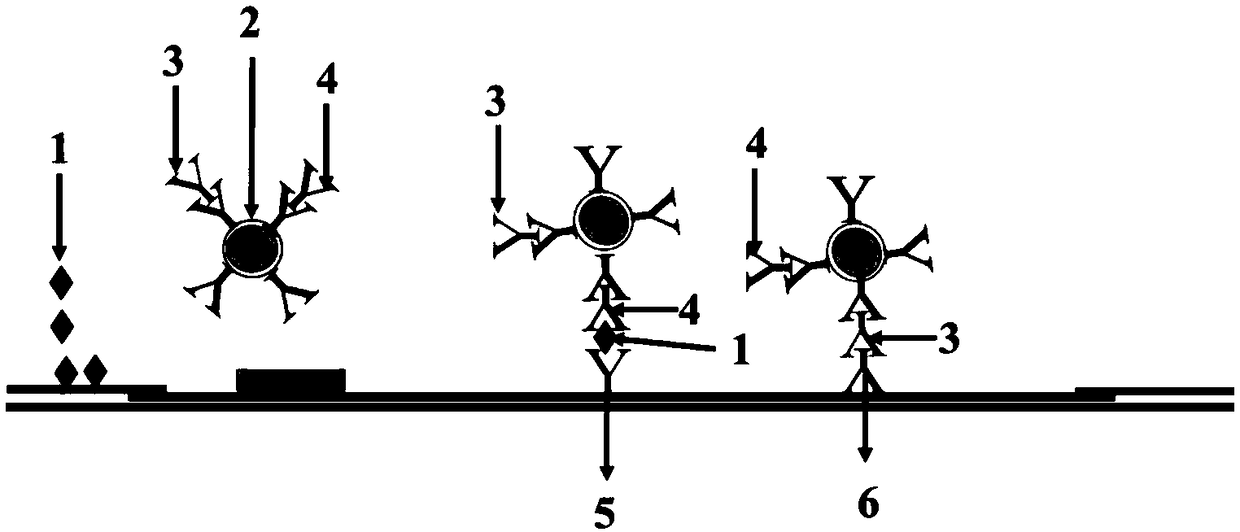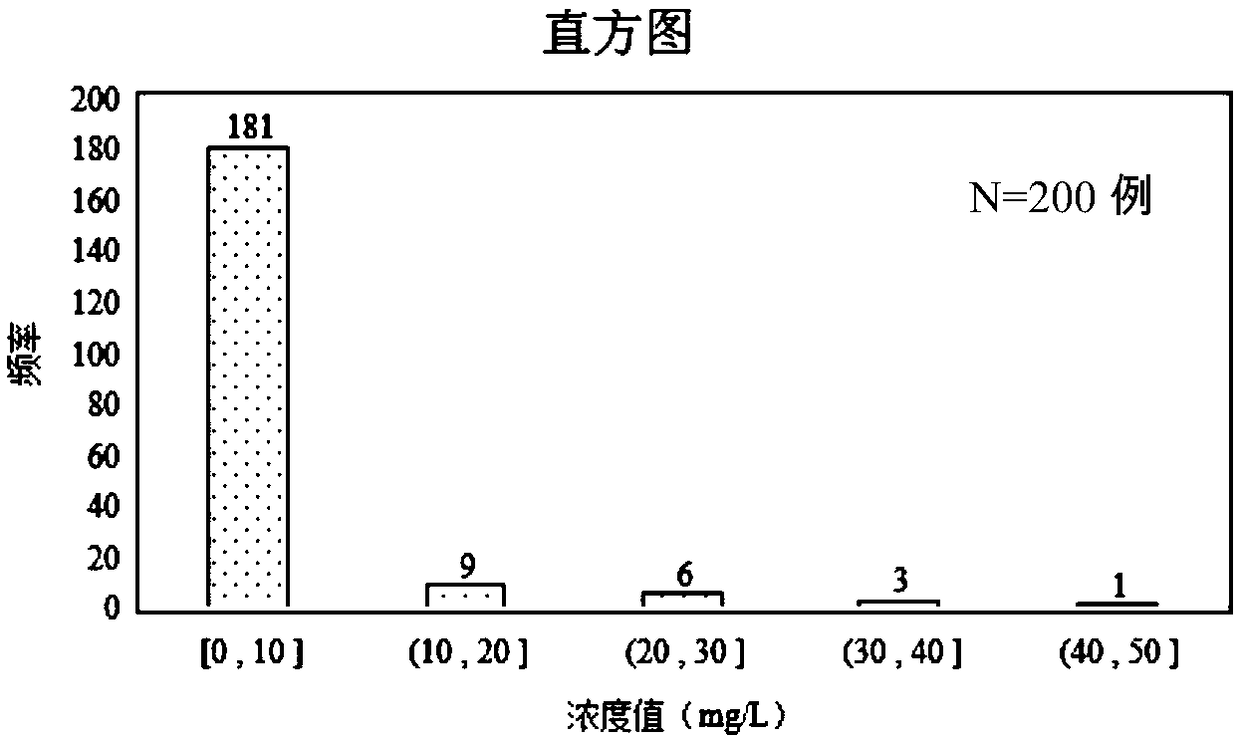Immunochromatographic test strip for quantitatively detecting canine C-reactive protein and preparation method thereof
An immunochromatographic test strip and reactive protein technology, applied in the field of biomedical testing, can solve the problems of insufficient sensitivity, accuracy, and linear range, etc.
- Summary
- Abstract
- Description
- Claims
- Application Information
AI Technical Summary
Problems solved by technology
Method used
Image
Examples
Embodiment 1
[0050] Embodiment 1, the composition of the immunochromatographic test strip of quantitative detection dog CRP
[0051] In the embodiment of the present invention, the canine CRP monoclonal antibody used is a monoclonal antibody prepared by conventional monoclonal antibody technology, and the canine CRP antigen is detected by the double antibody sandwich method. The embodiment of the present invention adopts the mixed labeling technology in which antibodies in the detection area (T line) and the quality control area (C line) are simultaneously labeled on a fluorescent latex particle. The principle is that the T line and the C line compete for the same fluorescent latex particle. When T When the line signal is low, the C line signal is high, and when the T line signal is high, the C line signal is low. This combination mode increases the T / C value of the two concentration points, which can greatly improve the sensitivity and the accuracy of the detection results. Widen the de...
Embodiment 2
[0057] Embodiment 2, the preparation of the immunochromatographic test strip of quantitative detection dog CRP
[0058] In this embodiment, the preparation of the immunochromatographic test strip for quantitatively detecting canine C-reactive protein comprises the following steps:
[0059] 1. Preparation of fluorescent latex particles-canine CRP antibody-goat anti-chicken IgY antibody complex
[0060] 1.1 Activation of fluorescent latex particles
[0061] Ultrasonic treatment of fluorescent latex particles for 30 seconds to adjust the concentration of fluorescent latex particles to 1.0×10 12 / mL, centrifuge at 10,000×g for 5 minutes, dissolve the precipitate with 80 μL of distilled water, and treat with 200W ultrasonic wave for 30 seconds; first add 10 μL of 20 mg / mL carbodiimide, mix well, then add 10 μL of 20 mg / mL N-hydroxysulfur Substitute succinamide, mix well; incubate at room temperature for 20 minutes, centrifuge at 10,000×g for 5 minutes, dissolve the precipitate ...
Embodiment 3
[0072] Embodiment 3, establishment of the reaction mode of the immunochromatographic test strip for quantitatively detecting canine CRP
[0073] 1. Standard curve drawing
[0074] Prepare the canine CRP antigen standard with canine CRP negative serum to prepare a series of concentration standards: 0mg / L, 2.5 mg / L, 5.0mg / L, 10mg / L, 20mg / L, 40mg / L, 80mg / L, 160mg / L , 400 mg / L, take 10 μL dropwise into the CRP sample buffer and mix by inverting repeatedly (8-10 times), then absorb 75 μL of the mixed liquid and dropwise into the sample hole of the test strip, after 3 minutes, pass the quantitative The detection device is Healvet instrument HV-FIA 3000 for detection, read out the signal intensity ratio of the detection area and the quality control area, that is, the T / C value (each concentration point is measured 10 times, and the average value is taken), and the concentration T / C standard curve is drawn .
[0075] 2. ID chip burning
[0076] Draw the corresponding concentratio...
PUM
| Property | Measurement | Unit |
|---|---|---|
| diameter | aaaaa | aaaaa |
| wavelength | aaaaa | aaaaa |
| concentration | aaaaa | aaaaa |
Abstract
Description
Claims
Application Information
 Login to View More
Login to View More - R&D
- Intellectual Property
- Life Sciences
- Materials
- Tech Scout
- Unparalleled Data Quality
- Higher Quality Content
- 60% Fewer Hallucinations
Browse by: Latest US Patents, China's latest patents, Technical Efficacy Thesaurus, Application Domain, Technology Topic, Popular Technical Reports.
© 2025 PatSnap. All rights reserved.Legal|Privacy policy|Modern Slavery Act Transparency Statement|Sitemap|About US| Contact US: help@patsnap.com



